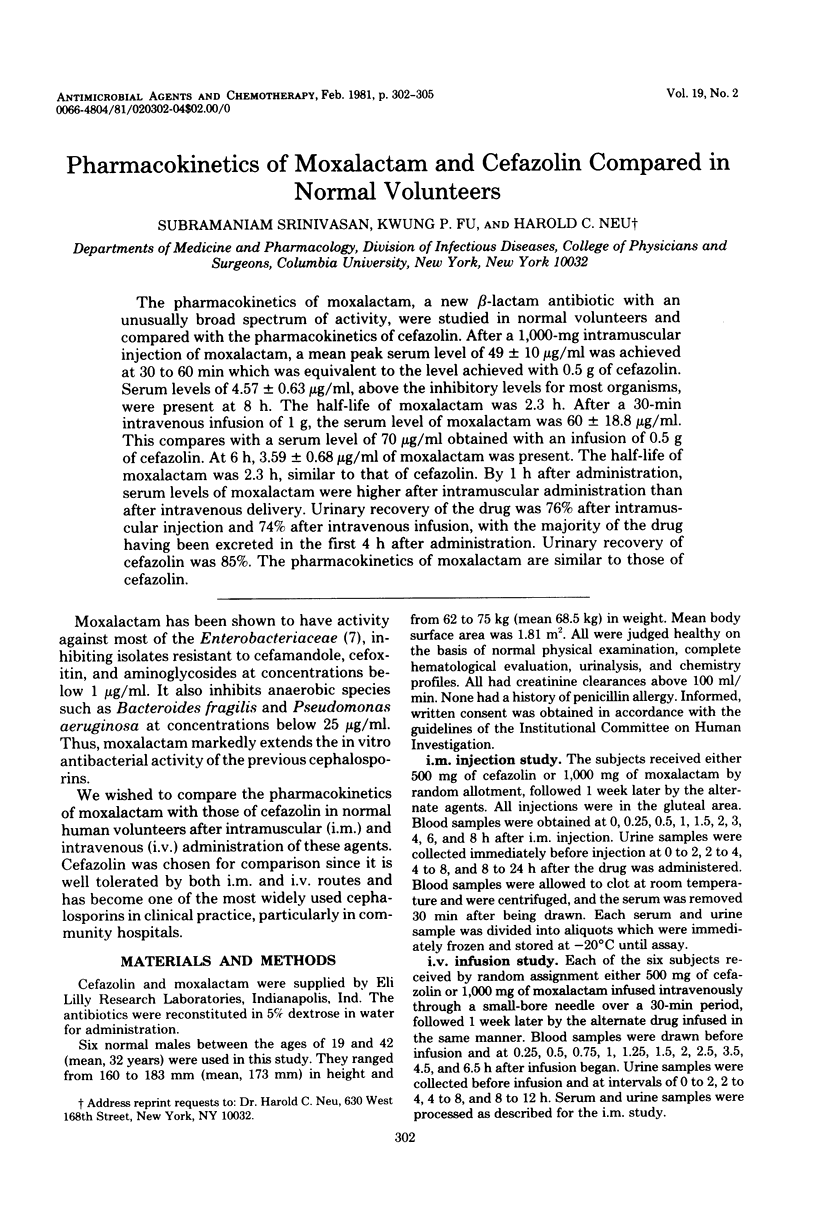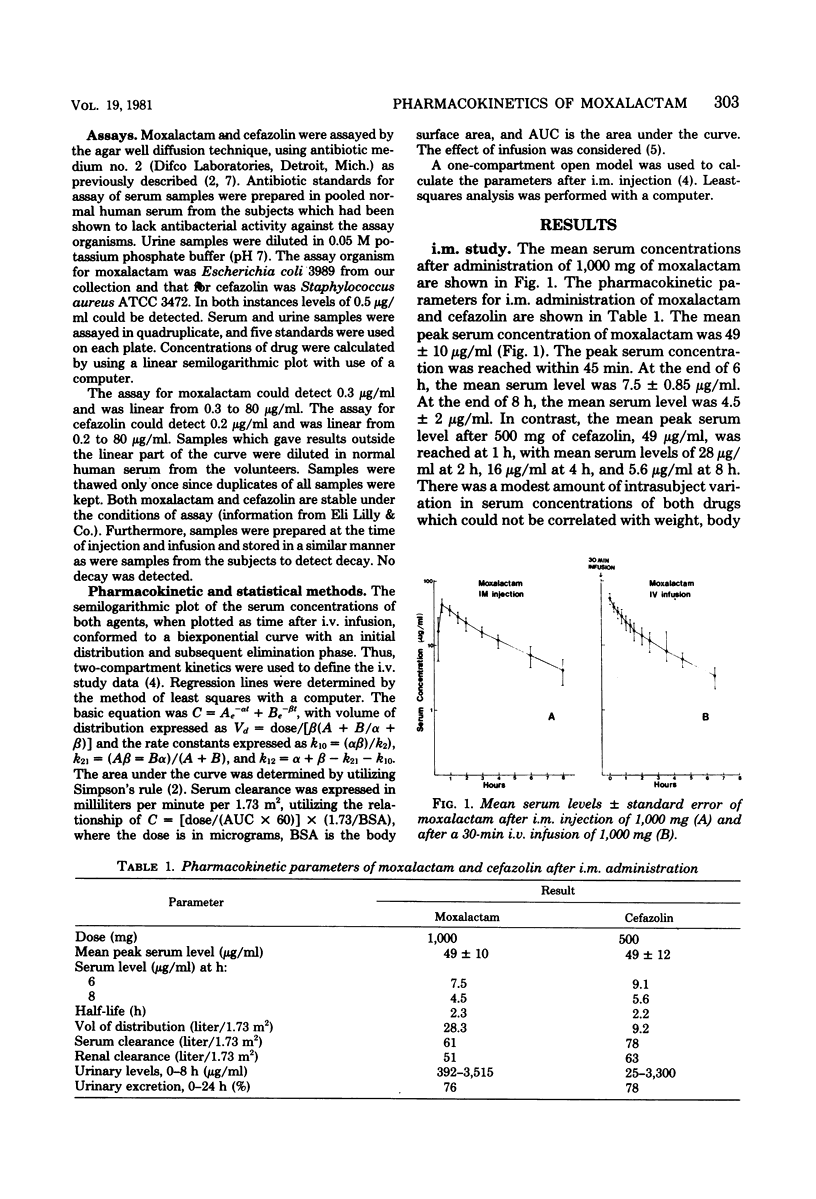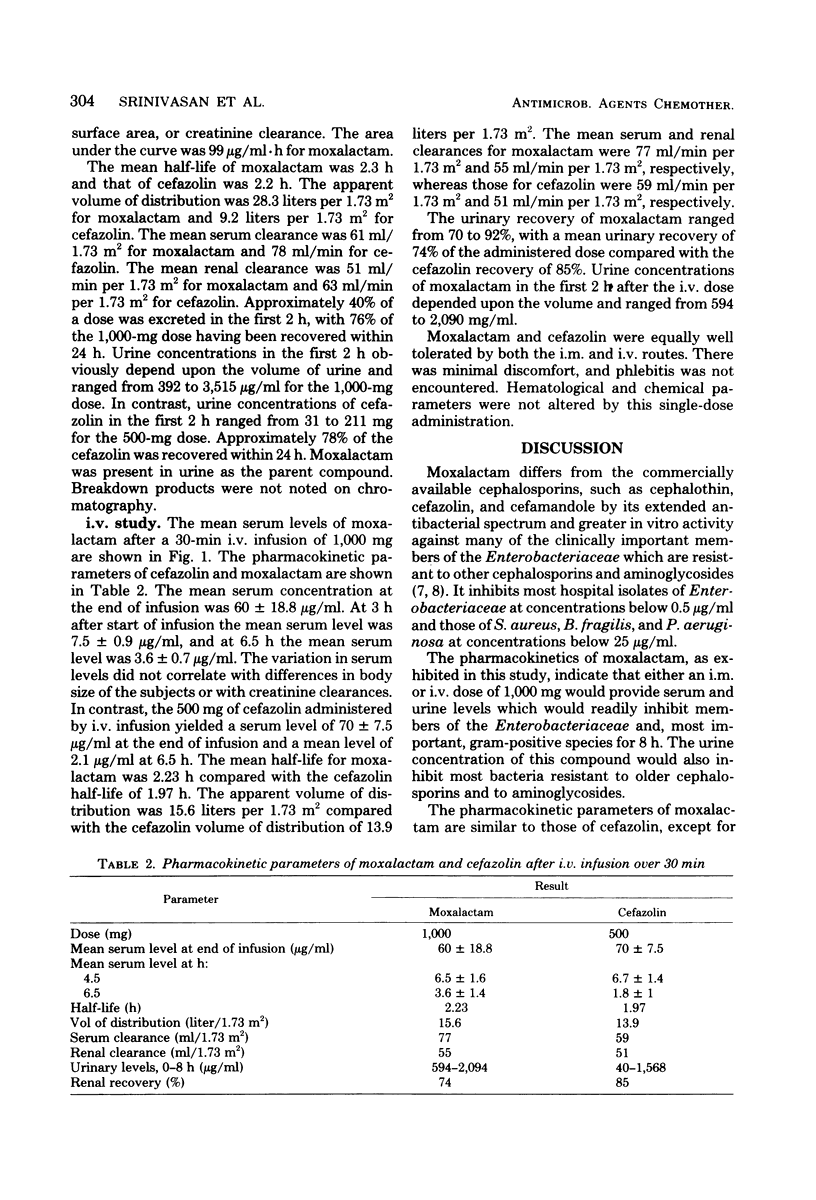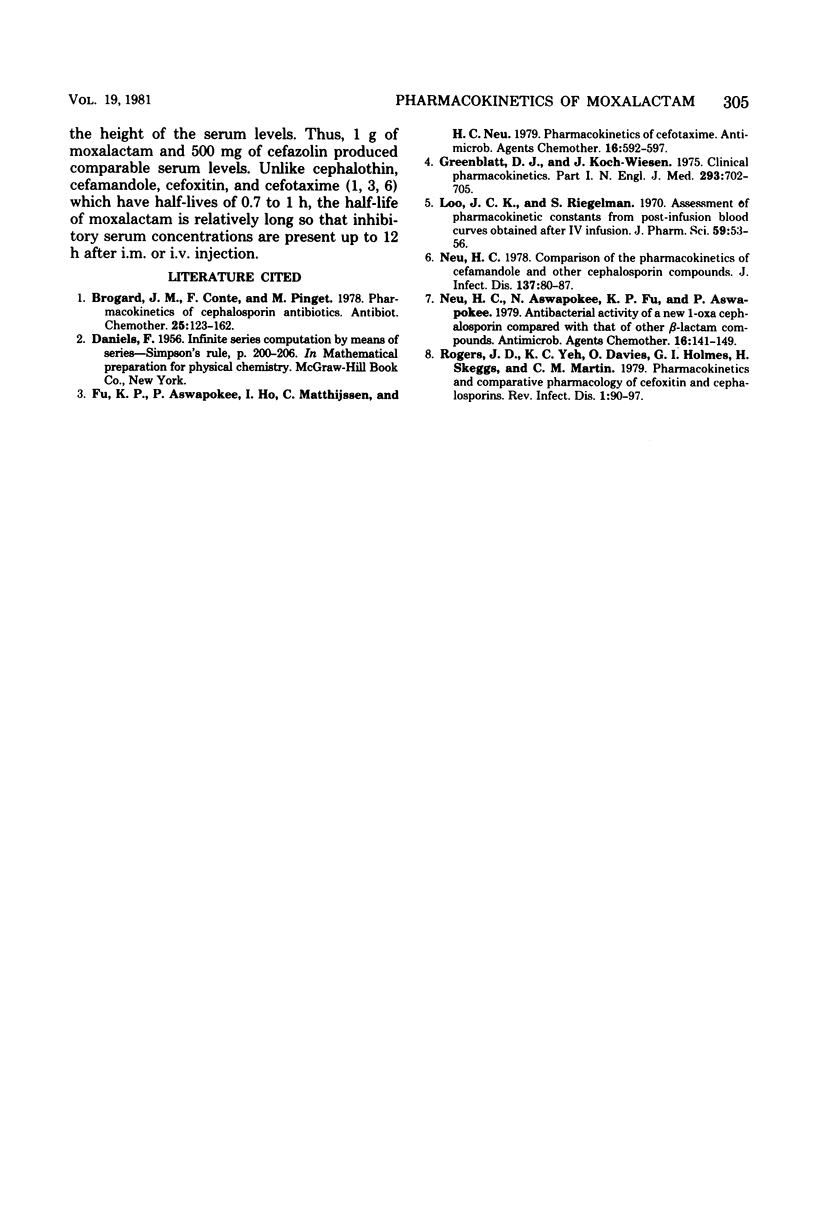Abstract
The pharmacokinetics of moxalactam, a new beta-lactam antibiotic with an unusually broad spectrum of activity, were studied in normal volunteers and compared with the pharmacokinetics of cefazolin. After a 1,000-mg intramuscular injection of moxalactam, a mean peak serum level of 49 +/- 10 micrograms/ml was achieved at 30 to 60 min which was equivalent to the level achieved with 0.5 g of cefazolin. Serum levels of 4.57 +/- 0.63 micrograms/ml, above the inhibitory levels for most organisms, were present at 8 h. The half-life of moxalactam was 2.3 h. After a 30-min intravenous infusion of 1 g, the serum level of moxalactam was 60 +/- 18.8 micrograms/ml. This compares with a serum level of 70 micrograms/ml obtained with an infusion of 0.5 g of cefazolin. At 6 h, 3.59 +/- 0.68 microgram/ml of moxalactam was present. The half-life of moxalactam was 2.3 h, similar to that of cefazolin. By 1 h after administration, serum levels of moxalactam were higher after intramuscular administration than after intravenous delivery. Urinary recovery of the drug was 76% after intramuscular injection and 74% after intravenous infusion, with the majority of the drug having been excreted in the first 4 h after administration. Urinary recovery of cefazolin was 85%. The pharmacokinetics of moxalactam are similar to those of cefazolin.
Full text
PDF



Selected References
These references are in PubMed. This may not be the complete list of references from this article.
- Brogard J. M., Comte F., Pinget M. Pharmacokinetics of cephalosporin antibiotics. Antibiot Chemother (1971) 1978;25:123–162. doi: 10.1159/000401060. [DOI] [PubMed] [Google Scholar]
- Fu K. P., Aswapokee P., Ho I., Matthijssen C., Neu H. C. Pharmacokinetics of cefotaxime. Antimicrob Agents Chemother. 1979 Nov;16(5):592–597. doi: 10.1128/aac.16.5.592. [DOI] [PMC free article] [PubMed] [Google Scholar]
- Loo J. C., Riegelman S. Assessment of pharmacokinetic constants from postinfusion blood curves obtained after I.V. infusion. J Pharm Sci. 1970 Jan;59(1):53–55. doi: 10.1002/jps.2600590107. [DOI] [PubMed] [Google Scholar]
- Neu H. C., Aswapokee N., Fu K. P., Aswapokee P. Antibacterial activity of a new 1-oxa cephalosporin compared with that of other beta-lactam compounds. Antimicrob Agents Chemother. 1979 Aug;16(2):141–149. doi: 10.1128/aac.16.2.141. [DOI] [PMC free article] [PubMed] [Google Scholar]
- Schrogie J. J., Rogers J. D., Yeh K. C., Davies R. O., Holmes G. I., Skeggs H., Martin C. M. Pharmacokinetics and comparative pharmacology of cefoxitin and cephalosporins. Rev Infect Dis. 1979 Jan-Feb;1(1):90–98. doi: 10.1093/clinids/1.1.90. [DOI] [PubMed] [Google Scholar]


